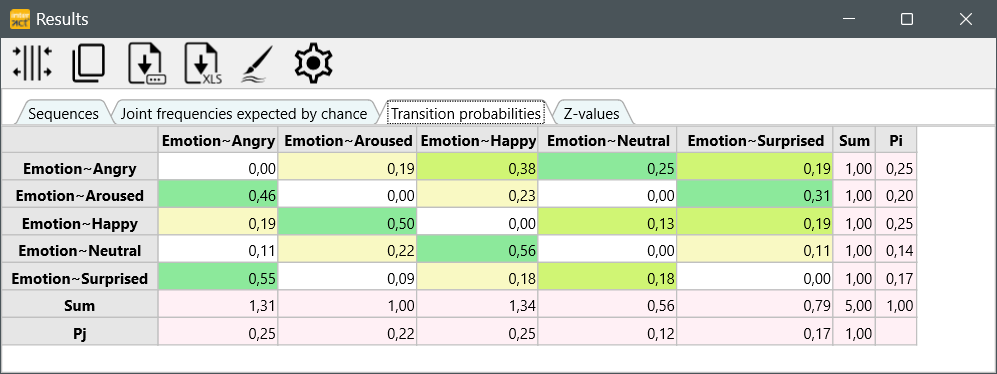Transition probability is a special kind of conditional probability. The difference compared to other conditional probabilities is, that the target and given events occur at different times. This displacement in time is often referred to as "lag", that is also why our Sequential Analysis is actually called Lag Sequential Analysis.
It shows you how likely it is, that a certain Code is followed by another Code, based on the collected data. But because calculation is conditional, the percentage is based on the number of sequences detected per Code (row sum), not on the total amount of Events or sequences found.
Those transition probabilities are treated as simple descriptive statistics.
Transition Results
The Transition probabilities in INTERACT are based on the formula in this book:
Observing interaction: An introduction to sequential analysis
(Second edition)
Roger Bakeman - Georgia State University
John M. Gottman - University of Washington
Cambridge university press
The tab Transition Probability looks like this:

The visible numbers multiplied by 100 tell you the probability in %.
Those values are calculated, based on the frequencies of the first tab.
Note: Calculation details can be found in Transition Calculation, in the INTERACT Help.